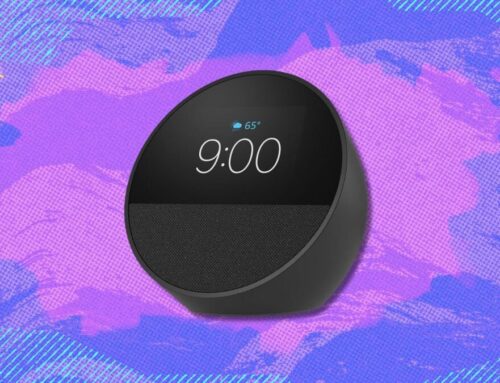Cannabis Use Common in Teens With Chronic Pain, Study Finds
June 12, 2025
Roughly one quarter of teens presenting at a pain clinic reported using cannabis, with the majority saying they used the drug to cope with symptoms related to chronic pain, according to new findings published in JAMA Network Open.
These teens used the drug to alleviate their physical symptoms, as well as anxiety, poor sleep, or nausea.
Researchers said teenagers who use marijuana increase their risk of developing adverse effects associated with the drug, such as worsening anxiety and depression.
“What concerns me most is the heightened risk of developing cannabis use disorder,” said Joe Kossowsky, PhD, MMSc, an assistant professor of anesthesia at Harvard Medical School in Boston, the lead author of the study.
The rising potency of tetrahydrocannabinol, the main psychoactive substance in cannabis, may compound the risks for adverse effects among youth who use the drug, he said.
Kossowsky said he conducted the research to find out the extent to which teens with chronic pain used marijuana.
Between 2021 and 2024, he and his colleagues recruited teens aged 14-19 years with diagnosed chronic pain conditions from a Boston pediatric pain clinic. Of 245 teens, 14 said they had used cannabis for recreational purposes and 48 said they had used the drug to manage their chronic pain.
The participants in the study completed surveys detailing the characteristics of their pain, frequency and reason for cannabis use, adverse effects, and beliefs around cannabis. They also filled out surveys detailing the extent to which pain interfered with daily activities such as running or standing, called pain interference.
The age of first cannabis use ranged from age 7-19 years (mean age, 15.3 years). Overall, teens reported having used cannabis over the previous year on a median of six to nine occasions. Most teens used edibles (51.6%), vapes (45.2%), and joints (43.5%) to consume marijuana.
The group younger than 18 years who said they had used cannabis for any reason reported slightly higher scores of pain interference than the group that had not used the drug. Their depressive symptoms scores were also higher than those who had not used.
Youth using marijuana to manage symptoms were a year younger on average than those who said they used it recreationally (mean difference, −0.7 years; 95% CI, −1.3 to −0.1 years; P = .04) and also reported greater functional disability (mean difference, 8.4; 95% CI, 2.1-12.6; P = .01).
Kossowsky told Medscape Medical News that he also found that those using marijuana to manage symptoms consumed it more frequently and had started at a younger age than those who used it recreationally; findings that were not included in the current research but that he said he plans on publishing in another study.
Initially, cannabis affects the endocannabinoid system, decreasing pain at the level of peripheral nerves, the spinal cord, and the brain.
“It does initially provide the relief that they’re looking for,” Kossowsky said.
But the nerve receptors in these areas become less responsive over time, necessitating heavier use of the drug to achieve the same level of relief. This cycle can increase the risk that a teen develops cannabis use disorder, Kossowsky said.
The long-term consequences of cannabis use are amplified during the developmental window of adolescence, said Sharon Levy, MD, chief of the Division of Addiction Medicine at Boston Children’s Hospital, Boston. The part of the brain that pursues pleasure is developing rapidly, and dopamine receptors that signal pleasure are at their lifetime densest.
“There’s a drive to do things that are going to cause a lot of dopamine firing,” which can include using cannabis, Levey said.
Meanwhile, the prefrontal cortex, the seat of executive functions that supports sound decision-making, is still immature and cannot be counted on for reliable input, Levy said. This developmental imbalance is the reason that substance use is particularly common among adolescents, Levy said.
Cannabis use during adolescence is associated with worse functional outcomes, such as diminished verbal memory and attention, poorer educational achievements, mental health disorders like anxiety, depression, psychosis, and addiction.
Kossowsky said he hopes his study will alert clinicians to the challenges faced by adolescents with chronic pain.
“I’m hoping there will definitely be more screening done and interventional work,” he said.
Participants in the study who used cannabis to manage chronic pain tended to think that the drug was safe because it was natural, the study showed. By contrast, their peers who did not consume cannabis were more aware of the risks of such usage, including worsening their medical problems and developing addiction to the substance.
Clinicians should also treat the pain, anxiety, and disrupted sleep that prompts patients to use cannabis.
“You can’t take that away from them without providing them with something else that helps,” Kossowsky said.
The first-line treatment is an integrative approach combining cognitive behavior therapy with physiotherapy. Medications can be added as needed, such as selective serotonin reuptake inhibitors to alleviate anxiety.
Kossowsky said he is currently tracking the same cohort of teens with chronic pain over 5 years.
“This study is a first effort to shed light on a complex issue,” Kossowsky said. “But now what we’re seeing has definitely warranted going a step further.”
This study was funded by the National Institute on Drug Abuse. The researchers reported no relevant financial conflicts of interest.
Vivien Fellegi, MD, is a freelance medical writer and a retired family medicine physician.
TOP PICKS FOR YOU
Search
RECENT PRESS RELEASES
Related Post




